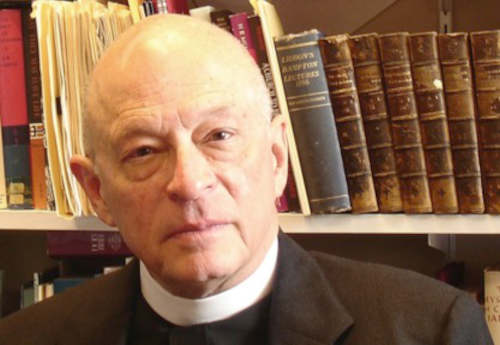
I deeply appreciate all that Louis Weil offered, and many of his books sprinkle my shelves. Louis Weil was a liturgical giant. He was especially a huge influence in the formation of the 1979 Book of Common Prayer of The Episcopal Church.
Louis Weil’s father was Jewish and his mother followed no faith. Louis became an Episcopalian while studying at Southern Methodist University in Dallas. He received a master’s degree in musicology from Harvard University and went on to train for the priesthood at General Theological Seminary.
From there he went to be a parish priest in Puerto Rico and drew on this for a pastoral approach in what became his life passion, liturgy.
He was the first Anglican to study for a doctorate at the lnstitut Catholique de Paris, at that time a very significant centre of liturgical renewal leading into and out of the Second Vatican Council – some of the great liturgical scholars central to that council were there at that time.
Back in USA in 1971, Louis taught liturgics at the Episcopal seminary, Nashotah House in Wisconsin.
It was first there that many of the ideas from the liturgical movement conversations in Paris took shape. I still remember an altar, a small square of beautiful wood, which lived in his garage after he left Nashotah, built according to a new understanding of the community gathering around the altar as a table, rather than the over-sized coffin-shaped altars typical of so many Episcopal Churches. The plethora of families at Nashotah House also provided a lab for Louis’ ongoing interest in how children engage in liturgy, resulting in several publications around rites of initiation with children as well as “Children and Worship,” in The Sacred Play of Children (edited by Diane Apostolos-Cappadona, 1983). It was also at Nashotah House that Louis’ summary of teaching and doing Anglican liturgy (a liturgical primer really) was created. His Liturgy for Living (originally published in 1979 and revised in 2000) has introduced new Episcopalians to their chosen church, provided an entry for many to begin liturgical studies, and provided insights for parish book clubs for years.
Lizette Larson
From 1988 to 2009, Louis taught at the Church Divinity School of the Pacific in Berkeley, California. This seminary was the Episcopal Church part of the ecumenical and interfaith consortium of the Graduate Theological Union.
He was a member of the North American Academy of Liturgy (which gave him the Berakah Award in 2012) and of Societas Liturgica. For four terms, Louis served on the Standing Commission on Liturgy and Music, and as I started with, was a significant architect to the 1979 Book of Common Prayer.
He was a man of prayer. And silence. He loathed the cluttering of the liturgy with more and more words, especially chatter added to the agreed rite by the presider, and he drew deeply from the desert and monastic traditions.
I often wonder, as these giants age and die, are there such colossuses taking up the mantle of people like Louis Weil?
Much in BCP 1979, I have already said, will have Louis Weil’s finger prints on it, one commentary points to one prayer certainly his – with which I conclude this post:
Grant, O Lord, that all who are baptized into the death
BCP 1979 page 306
of Jesus Christ your Son may live in the power of his
resurrection and look for him to come again in glory; who
lives and reigns now and forever. Amen.



I was one of Louis Weil’s many students. His funeral is today in California; I’m certain he is already in the arms of angels, and the embrace of his loving God. A remarkable, genuine teacher who made a significant impression on us all. He left us many funny stories, too! Rest in peace, Louis, and rise in glory.